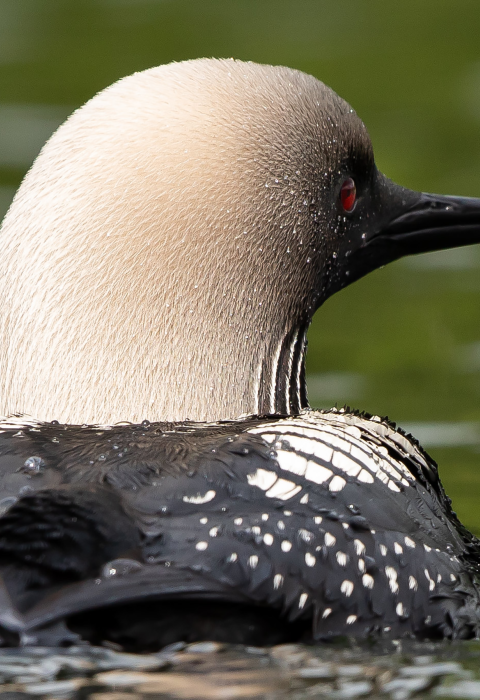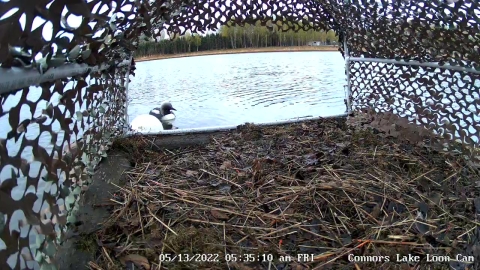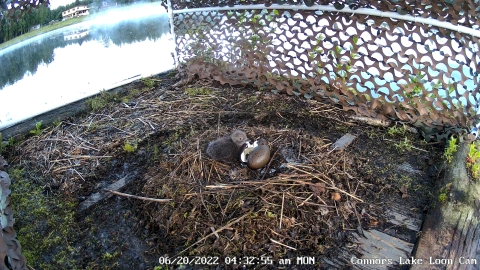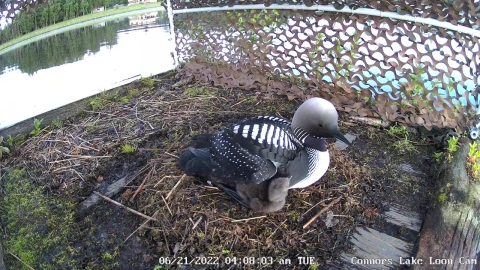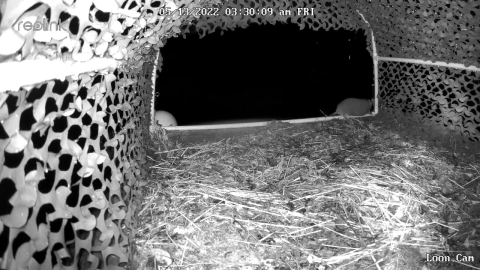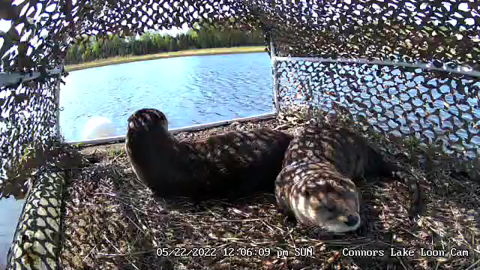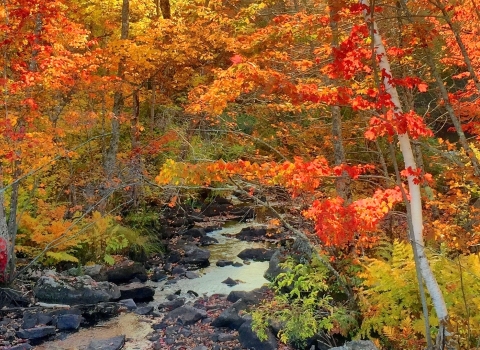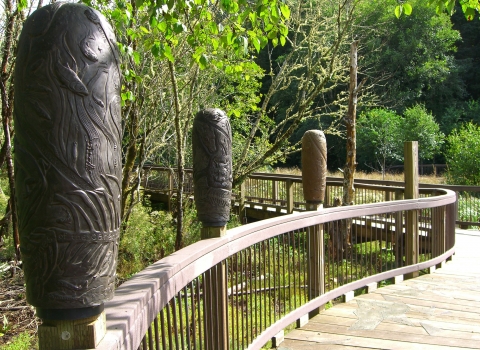The handcrafted wooden raft — recently outfitted with a brand-new camouflage canopy and livestream video camera — quietly drifts around its anchor on Connors Lake in Anchorage, Alaska. Waterbirds dabble on the shallow waters, while people play with their dogs on the shoreline and jets fly overhead from the nearby Ted Stevens International Airport. The raft awaits the arrival of a pair of Pacific loons. If all goes well, they will successfully nest and fledge a chick or two.
Of the five species, Pacific loons are the most widely distributed, spending summers on lakes across Alaska and winters along the southeast Alaska coastline to as far south as Baja, California. In Anchorage, Pacific loons traditionally nested on Connors Lake where residents Jean Tam and Scott Christy enjoyed watching them each summer.
Over time, the couple became concerned with potentially harmful human activity around the lake and sought ways to protect the species. In 2003, with help from Anchorage Audubon and fellow loon enthusiasts, they handcrafted and launched the wooden raft with a livestream camera to share Connors Lake’s loons with the world. For more than 15 years, they and their fellow enthusiasts launched and retrieved the raft each summer for Pacific loons to nest.
In 2019, the couple tragically died in an airplane accident. Tam and Christy made the world of these Pacific loons accessible to so many by building this floating platform and placing the original cameras to livestream the comings and goings. Exposure to such intimate details of loon life from nest building to chick hatching creates an emotional investment, which can translate to conservation action.
Their legacy is carried on by the Jean Tam Loon Conservation Endowment Fund, led by the Alaska Conservation Foundation, which supports the Connors Lake raft project as well as other loon conservation efforts across Alaska. “To continue their legacy with their friends and family has been deeply rewarding,” said Max Goldman, the science director of Reddish Egret Ecology and manager of the Connors Lake loon project. “Everyone doesn’t get a legacy. Jean and Scott do, though, and that’s a testament to the people they were and the lives they touched, bird and human alike.”
This past May, Goldman and Tamara Zeller, a migratory bird biologist for the U.S. Fish and Wildlife Service, Alaska Region, teamed up to install the new camouflage canopy and livestream video camera on the raft. The team would periodically tune in to the livestream to see and hear what was going on.
“Listening to the loons and the sounds of urban life just brought it up a level,” said Zeller. “I found myself obsessing over the camera and was completely emotionally invested. It was like watching a soap opera and not knowing what you might see when you turned on the camera.”
Goldman also thought it was like watching a soap opera. “There was always something ridiculous going on when I tuned in,” he said. “From otters taking over the raft for a nap to some "not safe for work" loon activity, eggs arriving, an adorable chick hatching, and the tragedy of an unhatched egg. It was emotionally exhausting.”
Over the next few months, the Pacific loons would come to know the raft as home – at least for the summer.
Arrival
Nesting
Hatching
Parental Care
Fledging
Visitors
Thanks to the work of the Alaska Conservation Foundation and the U.S. Fish and Wildlife Service, Alaska Region, the handcrafted wooden raft successfully supported the nesting and fledging of a Pacific loon once again. “This summer, the Connors Lake loon project added one more loon to the world and that feels good,” said Goldman.
The story of the Connors Lake loons highlights not only the passion that devoted naturalists Jean Tam and Scott Christy had for the loons and the natural world, but also the importance of protecting these species from harmful human activity. “The continuation of Jean and Scott's work is tremendously rewarding,” said Zeller. “I hope the project generates in other urban dwellers a connection to and respect for the wildlife just outside their doors.”
Loon populations worldwide are declining due to habitat loss, human disturbance, and environmental pollution from heavy metals, such as mercury and lead. Lead is toxic to loons and other wildlife when ingested and often leads to death. Death from lead poisoning has been shown to have population-level effects on common loons in areas of the lower 48 states.
While it is important to understand what is happening with loons at a population level, change often comes from the passions we develop in our own backyards. You can help loons by:
Leaving the shoreline of lakes, islands and marshy areas undeveloped.
Keeping pets on leashes unless you are in a designated off-leash area and your pet is under voice control.
Recycling fishing line to prevent loons and other wildlife from becoming entangled.
Using non-toxic, lead-free fishing tackle like steel, tin, tungsten, and bismuth sinkers and asking your local retailer to keep these alternatives in stock.
Picking up hooks and tackle.
Tour the lakes of the largest city in North America where loons nest and produce offspring: A Loon’s-Eye View of Anchorage
